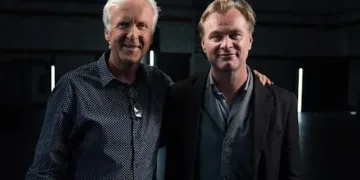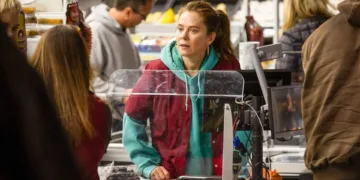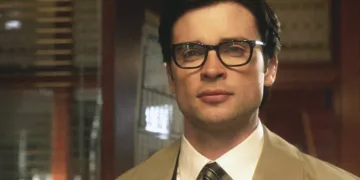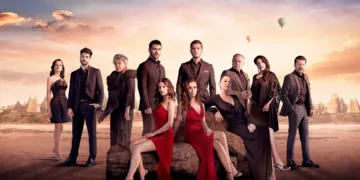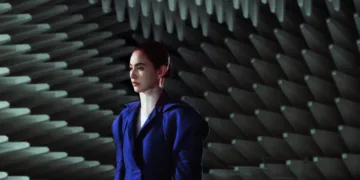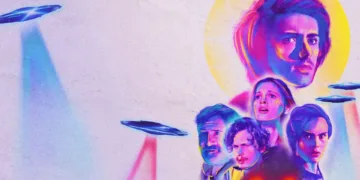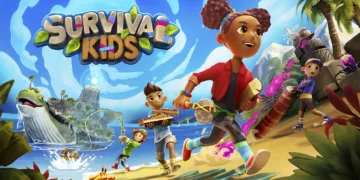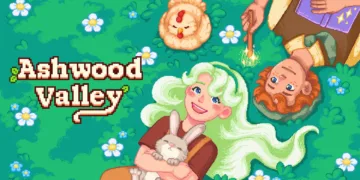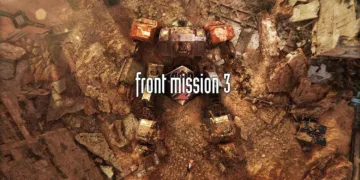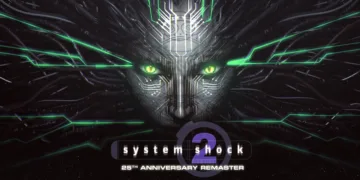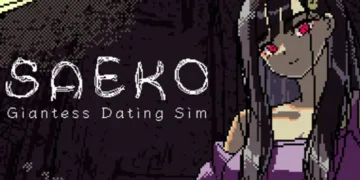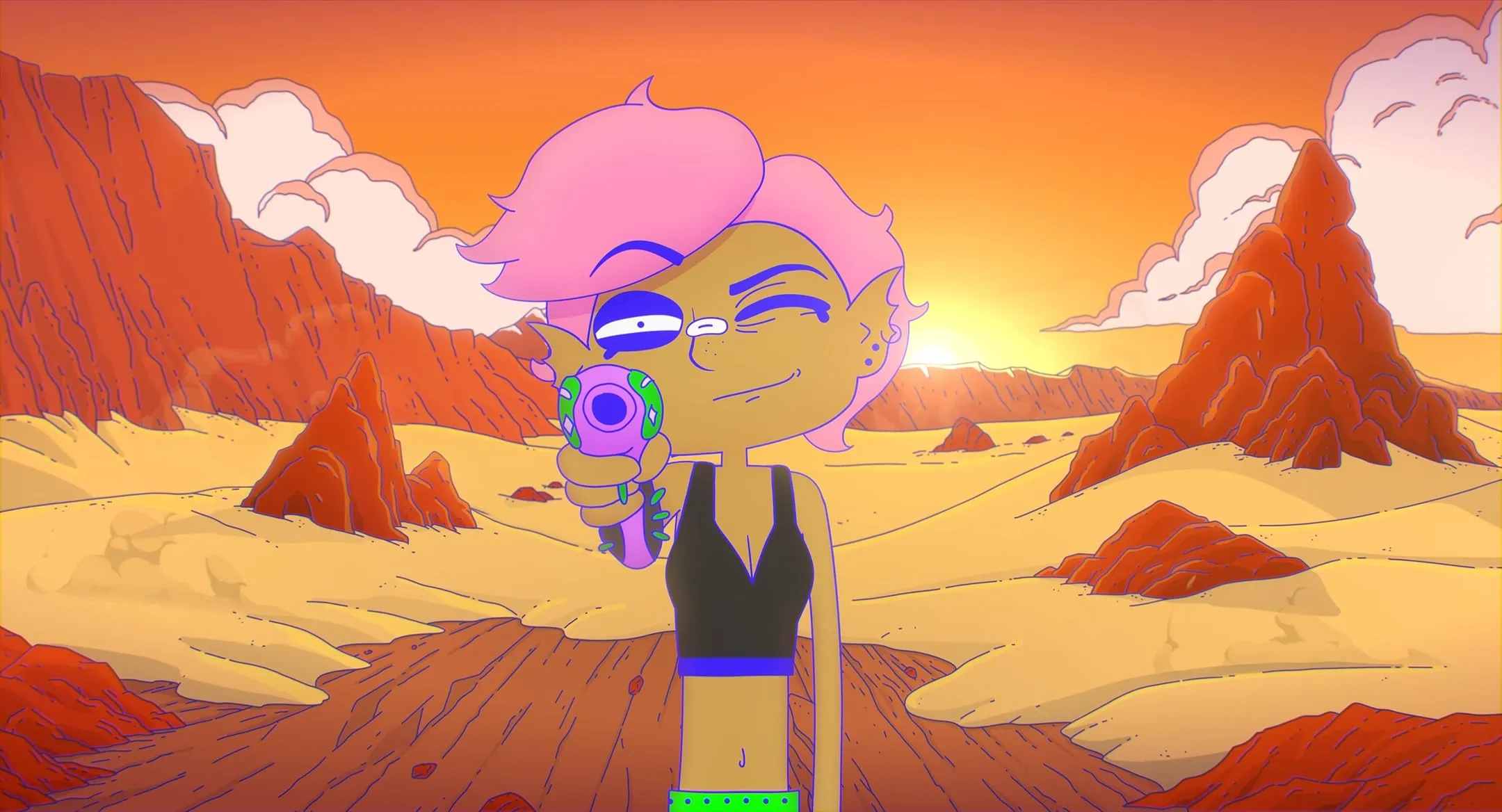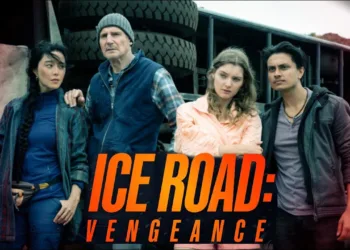The film opens with Saira set on a mission to retrieve Kiki after a painful parting, presenting what begins as a straightforward tale of lost love. The narrative quickly shifts as Saira confronts a crisis involving the theft of a potent weapon, the labrys, and a pressing 24-hour limit. This setup transforms the romance into a daring quest that pulls inspiration from diverse storytelling traditions, particularly those found in Eastern animated features and queer pop narratives.
Scenes move briskly between bursts of high-energy action and moments charged with humor and raw emotion. The screenplay interlaces serious character moments with absurd, fast-paced sequences that reflect a playful, internationally influenced style. Each subplot contributes its own flavor, whether in the portrayal of exotic alien landscapes or in the humorous portrayal of space-bound villains. The transitions between the dramatic and the absurd are sharp, providing a rhythm that recalls both traditional epic tales and modern, irreverent animations from various cultures.
These narrative techniques create an interplay that honors multiple cinematic traditions, presenting a story that challenges standard expectations while offering an entertaining experience that appeals to audiences around the world.
Character and Vocal Expression in a Global Tapestry
Saira’s transformation stands as a mirror reflecting various cultural narratives of self-realization. Initially introduced as a princess weighed down by the sting of rejection, her struggles with self-doubt and inner unrest are expressed with clarity in both her actions and voice.
Her progression from a figure mired in personal insecurities to a confident actor in her own story highlights the film’s attention to culturally rooted experiences of growth. The portrayal of her internal conflict—her battle with anxiety and her eventual acceptance of her own identity—presents a portrait that is sensitive to the nuances of emotional life. This evolution is rendered with a distinct vocal performance that carries the subtle textures of her inner world.
The presence of Kiki, whose departure initiates Saira’s quest, adds an additional layer of complexity. Kiki’s role is not merely that of an absent partner but rather a catalyst that exposes the raw edges of Saira’s character.
This dynamic invites viewers to consider how individual relationships shape the pursuit of self-assurance. Meanwhile, Willow introduces a lighter counterpoint, blending humor with poignant musical segments that serve as both comic relief and an exploration of cultural expression through song. Her contributions bring forth elements of modern pop influences while maintaining respect for the traditions inherent in queer storytelling.
Each character’s distinct vocal delivery reinforces the film’s broader conversation about identity. The ensemble cast, with performances steeped in diverse cultural influences, weaves a multifaceted narrative where personal and communal experiences converge. The interplay among these voices, each carrying its own cultural resonance, creates a dialogue that transcends simple character arcs. This multifaceted approach invites the audience to reflect on how cultural history and societal values shape individual paths, leaving a question open regarding the balance between personal pain and public performance in the quest for self-understanding.
Visual Style, Animation, and World-Building
The film presents a visual aesthetic that draws inspiration from Japanese anime, psychedelic hand-drawn cartoons, and bold pop art. Its art direction uses a sugary palette that recalls the style of classic series like “Sailor Moon” and modern animations reminiscent of “Adventure Time.”
The color choices and character designs work together to create an atmosphere that is both playful and layered. The use of vivid hues and exaggerated features not only enhances the storytelling but also reflects a deep appreciation for artistic traditions from diverse regions.
Clitopolis, the film’s primary setting, serves as a creative microcosm where an idealized queer society unfolds. The planet itself is rendered with whimsical charm, featuring landscapes and architecture that echo the imaginative spirit found in independent animated projects across Asia and the West. By placing its narrative in such an inventive environment, the film sets a stage where cultural references mix freely.
Even the depiction of antagonists, the Straight White Maliens, plays into this inventive framework by combining satirical elements with a design that fits neatly into the overall visual narrative. Their portrayal oscillates between being a source of mischief and a nod to familiar science-fiction tropes.
The animation technique leverages hand-drawn details and layered digital effects to emphasize a sense of movement and spontaneity. This visual approach parallels storytelling techniques seen in international animated films, where each frame contributes to a broader commentary on identity and societal expectations.
The film uses humor and visual exaggeration to challenge traditional sci-fi imagery, prompting viewers to reconsider common narratives and celebrate alternative cultural viewpoints. The integration of detailed environments and expressive character design encourages a dialogue between traditional and modern artistic expressions, leaving an open invitation to ponder the ever-evolving nature of visual storytelling.
Humor, Music, and Pop Culture References
The film presents a playful approach to humor that draws from diverse cultural sources. Its comedy is marked by irreverence and a playful absurdity that emerges in the naming of characters and factions, inviting comparisons to the witty styles found in international sci-fi and animated series.
The playful critique of typical space villains is evident in the portrayal of the Straight White Maliens, whose exaggerated traits and actions reflect both a satire of outdated archetypes and a light-hearted jab at recognizable cultural figures. This treatment of antagonists, along with moments that reference popular media, serves to bridge cultural divides by resonating with audiences familiar with various entertainment traditions.
Musical sequences in the film operate as narrative tools that add layers of emotion and humor to the overall storytelling. Certain numbers, complete with catchy tunes and lyrical nods to celebrated queer anthems, are seamlessly integrated into the plot. These moments provide not only levity but also a deeper reflection on the characters’ inner states. For example, a scene featuring an impromptu performance highlights a character’s internal struggle while also offering a playful homage to well-known musical styles from both Eastern and Western media.
The film’s soundscape is carefully crafted to mirror its visual storytelling, with each song contributing to the unfolding of character dynamics and plot twists. This interplay creates a rhythm where spoken dialogue and musical interludes work together to underscore themes of identity and cultural expression.
At times, the overt humor is balanced by subtler cultural references, which may resonate differently with various audiences, prompting a thoughtful comparison to other global works in similar genres. This interplay of elements invites viewers to consider how humor and music function as vehicles for social commentary and cultural dialogue, leaving room for multiple interpretations.
Themes, Symbolism, and Emotional Depth
The film celebrates queer culture by transforming a domain often marked by dominant masculine narratives into a space that is imaginative and inclusive. Saira’s character reflects personal struggles that mirror real challenges in embracing one’s true self.
Her experience, marked by moments of uncertainty and emotional burden, becomes a mirror for discussions on personal authenticity and social acceptance within a science fiction framework. This treatment revises familiar tropes, presenting queer relationships with clarity and sincerity while inviting viewers to reconsider societal norms.
The labrys serves as a key symbol throughout the film, appearing in scenes that mix humor with tender emotional moments. This recurring image stands as a sign of power and vulnerability, offering a visual metaphor for the balance between strength and the acceptance of one’s imperfections. Such symbolism prompts audiences to rethink ideas about self-worth and the forces that shape identity, serving as a subtle challenge to conventional narratives without sacrificing the film’s playful tone.
The work intermingles light-hearted segments with scenes of introspection, forming a rhythm where laughter and reflective pauses coexist. These shifts highlight that personal empowerment arises amid both joyful and challenging experiences.
The narrative design becomes a forum for considering issues like individual expression, community values, and the clash between modern ideals and traditional expectations. Each scene contributes to a layered discussion on identity and social dynamics, prompting audiences to consider how representations in film might resonate differently across various cultural landscapes.
Production, Direction, and Creative Vision
The film’s creation shows a resourceful approach to storytelling within the confines of a modest budget. The production team transformed limitations into inventive techniques, using economical animation methods that still deliver a visually striking experience.
The directors made deliberate choices with their design, opting for hand-drawn elements and digital layering to evoke styles reminiscent of international animated works. Their approach highlights a careful balance between cost-effectiveness and artistic integrity, resulting in a visual experience that feels both lively and thoughtfully crafted.
The co-directors exhibit a refined sensibility that reflects a dedication to queer narratives while handling multiple genres. Their work blends sci-fi, comedy, musical, and dramatic elements in a manner that respects diverse cultural influences. Each stylistic decision—from the exaggerated character designs to the playful yet pointed visual motifs—reveals an attention to detail that draws from varied artistic traditions. This perspective shapes the film’s narrative and visual presentation, creating a work that is accessible yet rich in cultural references.
The team’s inventive solutions to production challenges are visible throughout the film, from the strategic use of color and texture in the animation to the inventive integration of musical sequences. Their method of employing traditional and digital techniques together results in a layered visual storytelling style that can be compared to celebrated works in the global animated scene.
The directors’ commitment to authentic queer storytelling provides the narrative with depth, even as it spans a spectrum of genres and influences. Their creative vision invites viewers to reflect on how technical constraints can inspire fresh aesthetic choices, opening up questions about the future direction of independent animated projects.
The Review
Lesbian Space Princess
Lesbian Space Princess transforms modest resources into a vibrant, multi-genre experience that champions queer storytelling with inventiveness and wit. The film’s energetic visuals, dynamic humor, and heartfelt exploration of identity create an engaging experience that resonates across cultural boundaries. While its narrative occasionally juggles too many tones, its artistic ambition and cultural insight shine through.
PROS
- Inventive production that maximizes a modest budget
- Bold, colorful visual style inspired by diverse cultural influences
- Engaging mix of genres that enriches the narrative
CONS
- Occasional narrative overload with multiple tonal shifts
- Inconsistent balance between humor and drama
- Some elements may seem rushed or overly ambitious














